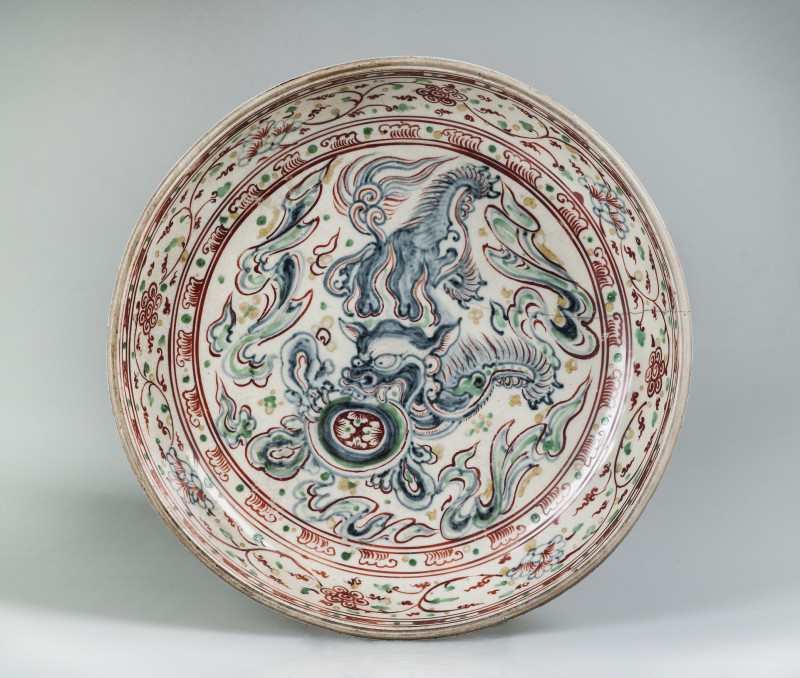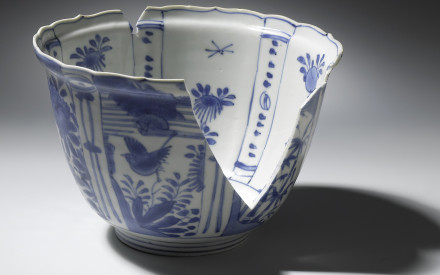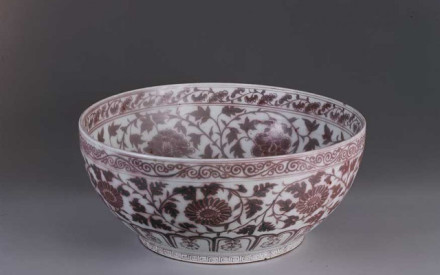In the 1990s, a shipwreck was discovered off the coast of Hoi An with more than 250,000 Vietnamese ceramic objects in its hold. As the ship can be dated to around the late fifteenth/early sixteenth century, the cargo can also be dated to around that time. The enormous quantities of Vietnamese ceramics that have since been found in other shipwrecks from this period confirm that huge quantities of these products were traded in Asia.
Vietnam has a long pottery and stoneware tradition. One of the most productive periods was during the Lý dynasty (1009-1225). Pots with inlaid decorations of abstract plants or flowers covered with a brown glaze (fig. 1), and shapes such as jugs and urns covered with a monochrome creamy white, brown, black or brownish green glaze, are typical of products from that time (fig. 2). The kilns where these ceramics were produced were identified in the 1920s and 1930s: Thanh Hoa, in North Vietnam. A typical feature of Vietnamese ceramics is the application of brown slip on the reverse of dishes, plates and bowls (fig. 3). This technique was first used during the Lý dynasty.




Production declined temporarily after the Lý dynasty fell in 1225, only to revive in the fifteenth century when Hoi An, situated on the east coast of Vietnam, developed into an important trading centre on the South China Sea.1 The ceramics traded there were produced in the Red River Delta, an area in North Vietnam near the present-day city of Hanoi. Two of the most famous kilns where many ceramics were manufactured are Bat Trang and Chu Dau. Neighbouring China has occupied this region several times in the past, for example, in 1407. It is possible that cobalt oxide, which was used in China, was introduced at that time as a pigment for the blue paintings on ceramics.2 In addition to the blue applied under the glaze, some pieces were also painted in overglaze red, green and yellow. Beautiful examples of both techniques are a phoenix-shaped jug and a dish decorated with a crane (fig. 4). In Asia, the crane and the mythical phoenix symbolise longevity. They are potent animals and because of their auspicious associations often appear as motifs on ceramics.
- 1S. Thomas, Hoi An Shipwreck, 2014, https://traffickingculture.org/encyclopedia/case-studies/hoi-an-shiwreck.
- 2R.M. Brown, The Ceramics of South-East Asia. Their Dating and Identification, New York 1988, p. 25.



Vietnamese ceramics experienced an unprecedented boom period, especially in the fifteenth and sixteenth centuries. Despite the influences from China, the Vietnamese managed to develop their own style. Stoneware objects with playful decorations of animals and flowers are characteristic (fig. 5-7). At the time, the Chinese emperor had largely restricted export trade, which meant that other countries in Asia lost their steady supply of high-quality Chinese ceramics. The Vietnamese and Thai potters took full advantage of this gap in the market, resulting in a large supply of ceramics from those regions to other areas of Asia, as is confirmed by the many (archaeological) finds in Indonesia, the Philippines, Malaysia and Japan.3 Vietnamese ceramics remained a much sought-after export product, also in the seventeenth century, although by then the Vietnamese had to compete with producers in China and Japan.4
Literature
https://www.seaceramic.org.sg/ceramics_of_sea/vietnam/
Roxanna M Brown, The Ceramics of South-East Asia: Their Dating and Identification, 2nd ed. Singapore: Oxford University Press, 1988.
John N. Miksic (ed.), Southeast Asian Ceramics: New Light on Old Pottery, Singapore: Southeast Asian Ceramic Society, 2009.
Nguyen Dinh Chien and Pham Quoc Quan, Vietnamese Brown Patterned Ceramics, Hanoi: White Lotus Press, 2005.
- 3Ngo The Bach, ‘Vietnamese Ceramics in Asian Maritime Trade between 14th and 17th centuries’, in: H. van Tilburg et al. (eds.), The MUA Collection, Kingston, RI (Museum of Underwater Archaeology), 2014, http://www.themua.org/collections/items/show/1619
- 4Ngo The Bach (see note 1), p. 8.


















